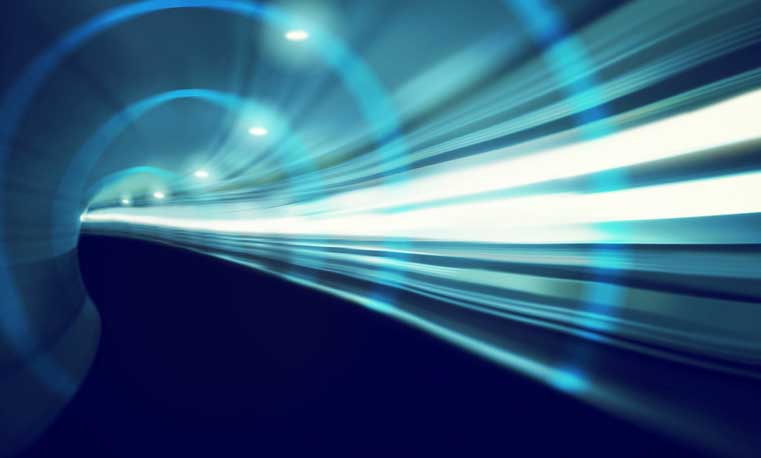
Last month, internet speeds in Jackson, Mississippi, jumped from 1 Gb to 100 Gb. This leap forward is part of the city’s work to light up “dark fiber” in the robust fiber optic network that it owns.
The Origin of Dark Fiber
The term “dark fiber” refers to unused or underused fiber optic infrastructure (optical fibers, fiber cables and repeaters). Because it’s expensive to deploy cable (especially under oceans), companies typically install more fiber than they will need. This fact was especially true during the dot.com boom of the 1990s. However, after the bust of the early 2000s, many companies either went bankrupt or merged. The result is that today, in addition to “lit fibers” (fibers currently transmitting data by light), there are many “dark fibers” (unused fibers) within the same networks.
Cities Lighting UpBecause it’s possible to buy or lease these fibers, some cities and companies see using dark fiber as an appealing way to save money or create a new revenue stream. However, there are other factors to consider because using dark fiber isn’t straightforward. Buying and managing a fiber network takes skills that many organizations simply don’t have. Also, when a group starts selling network bandwidth, it takes on the role of becoming an ISP.
And on top of this, success isn’t always guaranteed. Take the example of California’s Santa Monica CityNet. In 2014, CityNet became the first 100 gigabit municipal network in the country. However, in its efforts to lease dark fiber, CityNet has signed up less than 2 percent of the business market since 2006. It has also collected only about $2.1 million in revenue over that time.
Other Uses
At least for now, dark fiber still has staying power. One factor driving its use is cloud computing which requires greater bandwidth. However, dark fiber could face greater competition as cities get “smarter” and 5G wireless communications roll out.
Ironically, dark fiber’s strength may come through uses besides connectivity. At the Lawrence Berkeley National Laboratory, Dr. Jonathan Ajo-Franklin is using dark fiber to measure seismic signals. Dr. Ajo-Franklin’s team gained permission to access a section of a dark fiber network between Sacramento and Calusa, California. During a seven-month experiment, the team collected about 300 terabytes of data. Ultimately, they found that the same dark fiber installed for communications was also useful in making distributed measurements. These measurements included seismic wave fields, temperature, strain and vibrations that can affect infrastructure (such as the number of cars on a road). In other words, an unused fiber installed for a telecom network might also be used in sensing.
What’s more, by using dark fiber, the team saved a substantial amount of money by replacing a critical, huge array of thousands of individual point sensors with an existing, installed fiber optic cable.
Tags: dark fiber, fiber optic network, optical fiber
